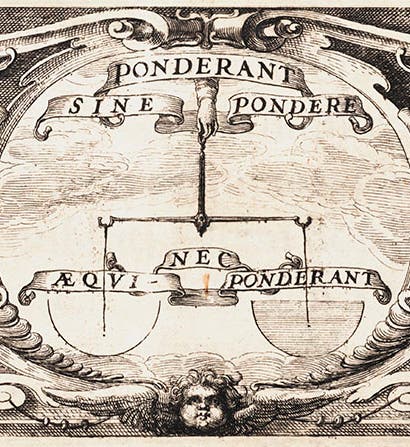Scientist of the Day - Paul Guldin
Paul Guldin, a Swiss Jesuit mathematician, was born June 12, 1577. Guldin was interested in methods for determining the centers of gravity for variously shaped solids, and he even discovered, or rediscovered, a theorem to that end, sometimes called Guldin’s theorem, and sometimes the Pappus-Guldin theorem, to acknowledge both independent discoverers. This theorem and much more was compiled into a massive four-volume work, De centro gravitatis (1635-41), that we have in our History of Science Collection.
One of the pleasant features of the set is that Guldin devised, or had devised, four engraved title-page vignettes to introduce each of the four volumes, and all four are reproduced here, in order. We also show a detail of the first emblematic vignette (first image). You are more than welcome to attempt to decipher the meanings.
If you browse on the internet for “Paul Guldin portrait,” the most frequent result will be a full-face portrait of a man wielding a pair of calipers next to a table holding an armillary sphere. Wikipedia has such a portrait, which is reproduced on many websites; we show it here as our sixth image.
The only problem is that, even though the portrait has a contemporary label identifying the sitter as Guldin, it is in fact a purloined and misidentified portrait of an earlier Jesuit mathematician, Christoph Clavius, who died in 1612 (seventh image).
We featured Clavius as our Scientist of the Day just two months ago, where we led with this engraved portrait. A portrait of the real Paul Guldin has yet to emerge. Dr. William B. Ashworth, Jr., Consultant for the History of Science, Linda Hall Library and Associate Professor, Department of History, University of Missouri-Kansas City. Comments or corrections are welcome; please direct to ashworthw@umkc.edu.










